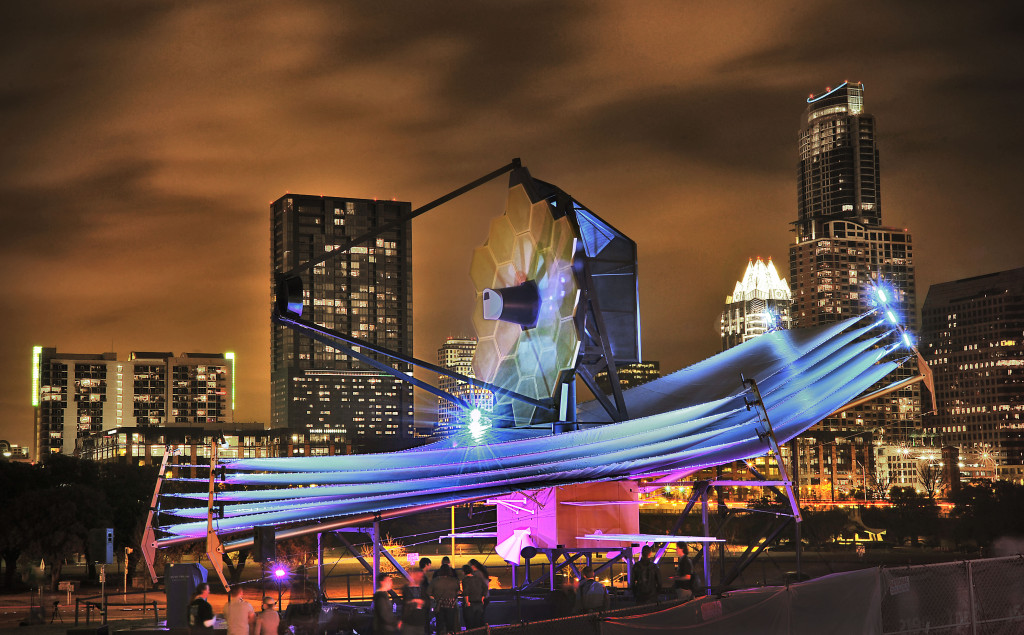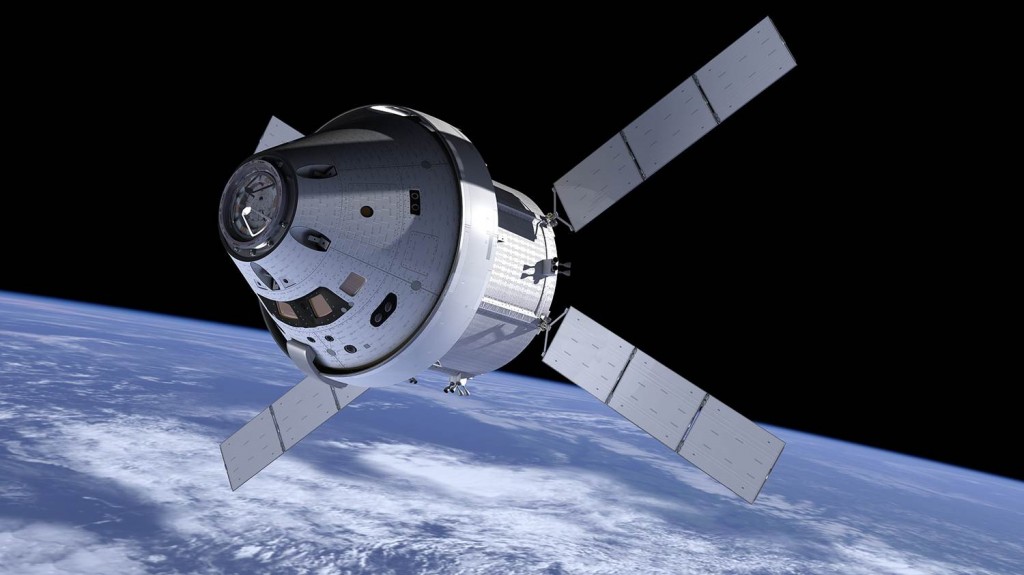Another nodosaur named Edmontonia | Image: LadyofHats, CC0 (Public Domain)
This week we’ve got links to a truly beautiful fossil, news on the James Webb Space Telescope’s final testing, and a rejection from NASA of the request to crew Orion’s first circumlunar flight. It’s the news roundup for the week of Sunday, May 14, 2017!
A Beautifully-Captured Death
Various cultures at various times have made “death masks” to memorialize the newly dead—taking casts of the faces of the dead as a final record of what the living once looked like. But, as usual, nature has us beat. Exhibit A: the most incredible fossil of a nodosaur you’re ever going to see anywhere. Discovered in a Canadian mine, the fossil of the ankylosaurus relative is featured in this week’s National Geographic, and boy is it something to behold. Apparently, the creature died when a river flushed it out to sea. It then sank into deep water, where one supposes the mud was low in available oxygen. Upside down in the mud, even its soft tissues became suffused with minerals. By the time it was revealed to human eyes roughly 110 million years later, it was an almost perfect stone replica of its image in life (and the ocean, well, that’s not there anymore). For copyright issues I can’t reproduce the NatGeo photos here, which means you need to click through to see them. You can find them (and a great writeup about them) at National Geographic. If you want to see it in real life, you’ll have to go to the Royal Tyrrell Museum in Drumheller, Alberta.

Cold Test for the JWST
The NASA Johnson Space Center in Houston, Texas, has a new guest: The James Webb Space Telescope. In the coming days, it’ll be locked up in a large vacuum chamber and cooled to just fifty degrees Kelvin—that’s -223 Celsius or -370 Fahrenheit—and kept there for three whole months. The test is to ensure that the ten billion dollar project will perform as expected in the deep cold of Earth’s L2 Lagrange point on the far side of the moon. Being an infra-red telescope, these icy temperatures are integral. The JWST is going so far, and has so many layers of shielding, so that it can detect even the faintest traces of infra-red light from some of the most distant objects in the universe. Any heat at all could overwhelm the signals it’s going to try to detect. If all goes well, the telescope will launch in October of next year, and we’ll have to hope and pray that it doesn’t need any spacewalks to fix it, because we’ve never sent people as far away as it’s going to be. You can read more on the story over at Spaceflight Now.

No Passengers
Back in February, news started to circulate suggesting that NASA was considering sending astronauts aboard the first flight of its Orion capsule, as it flew around the moon and back. That trip was originally planned for 2018 (but has since been pushed back to 2019), with the first crewed mission talking place in 2021. But the Trump administration, who asked for the change, is going to be disappointed: this week NASA publicly ruled-out the move to turn the uncrewed trip into a crewed one, sticking with its conservative, safety-first traditions. While NASA called putting astronauts on the first trip “technically feasible,” they decided against because of the extra resources it would require, and the time and effort it would take to mitigate new risks. As things stand, then, the first Orion flight will launch atop an SLS in two years’ time. You can read more on the news, again, at Spaceflight N0w.
Best of the Rest
And because life is short and writing takes time, here it is, your weekly linkspam!
- The US Secretary of State signed an international declaration recognizing Climate Change
- Ireland has dropped the absurd “blasphemy” charges against Stephen Fry
- Vaccines still don’t cause autism
- Your nose is super useful, and
- “Dexter” Holland from The Offspring just finished his PhD on HIV/AIDS
***
Thanks again for reading. Except for the very *very* occasional tip, we only get paid in my own (and your) enthusiasm, so please like This Week In Tomorrow on Facebook, follow us on Twitter @TWITomorrow, and tell your friends about the site!
If you like our posts and want to support our site, please share it with others, on Facebook, Twitter, Reddit — anywhere you think people might want to read what we’ve written. If there’s something you think we’ve missed or a story you’d like to see covered, drop us a line! Thanks so much for reading, and have a great week.
***
Richard Ford Burley is a human, writer, and doctoral candidate at Boston College, as well as Deputy Managing Editor at Ledger, the first academic journal devoted to Bitcoin and other cryptocurrencies. In his spare time he writes about science, skepticism, feminism, and futurism here at This Week In Tomorrow.

